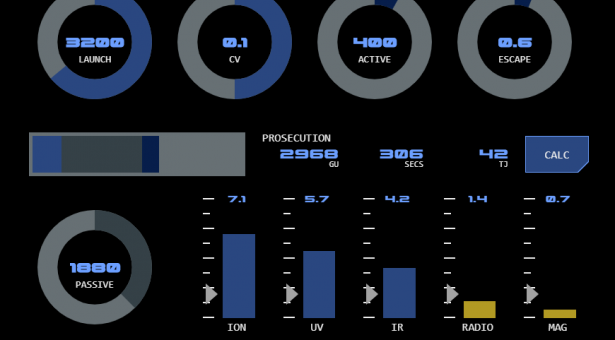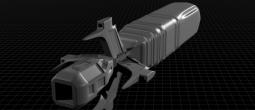

Torpedo Firing Solutions

A firing solution is a set of conditions that represent the best chance of successfully prosecuting a torpedo launch.
Firing solutions typically focus on the range and relative velocity between the torpedo and target across the torpedo’s flight modes.
Closing Velocity
A torpedo will have the velocity of the launching vessel plus velocity added at launch. Therefore, the faster the launch vessel is travelling, the faster the torpedo.
The delta between the torpedo’s velocity and that of the target is its closing velocity (CV) and will determine how quickly the torpedo will close on the target. As the torpedo remains undetectable while in guided mode, the target is assumed to maintain its speed. When the torpedo goes to active mode and becomes detectable, it is highly likely the target will accelerate away from the torpedo in an attempt to outrun it.
If the torpedo’s closing velocity is too high, the target will be unable to accelerate away fast enough and prosecution is likely to be successful.
Torpedo Velocity
A torpedo’s velocity does not change significantly after launch. Torpedoes use chemical thrusters to make heading changes, which provide enough thrust to maintain velocity during a heading change but are not powerful enough to add velocity.
Prosecution Phases
A torpedo's path to its target can have up to three phases (although not all three are necessarily required).
Wire-Guided Phase
This phase occurs immediately after launch. The torpedo is connected to the vessel via an ultra narrowband data link (or 'wire'), which allows targeting information to be passed from the vessel's sensors to the torpedo.
While in this phase, simple instructions can be sent to the torpedo updating targeting information or aborting the prosecution, for example.
The data link system is capable of tracking the torpedo through a limited range of movement. If either the vessel or the torpedo maneuver outside of that range, the data link is lost and cannot be regained.
Passive Phase
When the torpedo loses its data link, it falls back to its on-board sensors. These are similar to the vessel's EMDAR sensors but are less powerful and can only operate within a single EM band (selected prior to launch) and only within a limited targeting arc.
The torpedo does not have to have a consistent EM source to lock onto, but if trackable EM is not detected before the target moves out of the targeting arc, the torpedo will be unable to prosecute.
Active Phase
At a distance from the target defined at launch or after a defined period since the last EM track, the torpedo will go into active mode, which uses high-frequency radio ranging (RADAR) to track the target.
In this mode the torpedo will become immediately detectable by any vessel in the vicinity (including the target). The torpedo is also targetable by counter-measure systems in this mode.
As a consequence, entering the active phase should be delayed as long as possible.
Firing Solution
A firing solution requires a closure rate that is high enough relative to range to ensure successful prosecution.
This requires that:
- the launch vessel is travelling fast enough to ensure a sufficient closing velocity;
- the range to target when the torpedo enters active mode is too short for the target to outrun the torpedo;
- the torpedo can be maintained in guided mode long enough for the range to close sufficiently
Solution Options
A firing solution uses the following variables:
Launch range: The expected distance to the target when the torpedo is launched.
Closing Velocity: The difference in speed between the vessel and target. This is a critical factor in a torpedo launch as most of the torpedo’s relative velocity will come from the vessel’s speed at launch.
Passive Range: The distance from the target that wire-guidance can be discontinued, which assumes the torpedo's on-board senors can maintain a track on the target. Data will be provided on the target’s ambient EM at the selected range to help assess the maximum range at which shifting to passive mode would be effective.
Active range: What range from the target will the torpedo go into active tracking mode. This makes the torpedo detectable and will also likely cause the target to accelerate away to escape.
Escape Acceleration: The likely thrust a vessel will apply to try and outrun the torpedo








